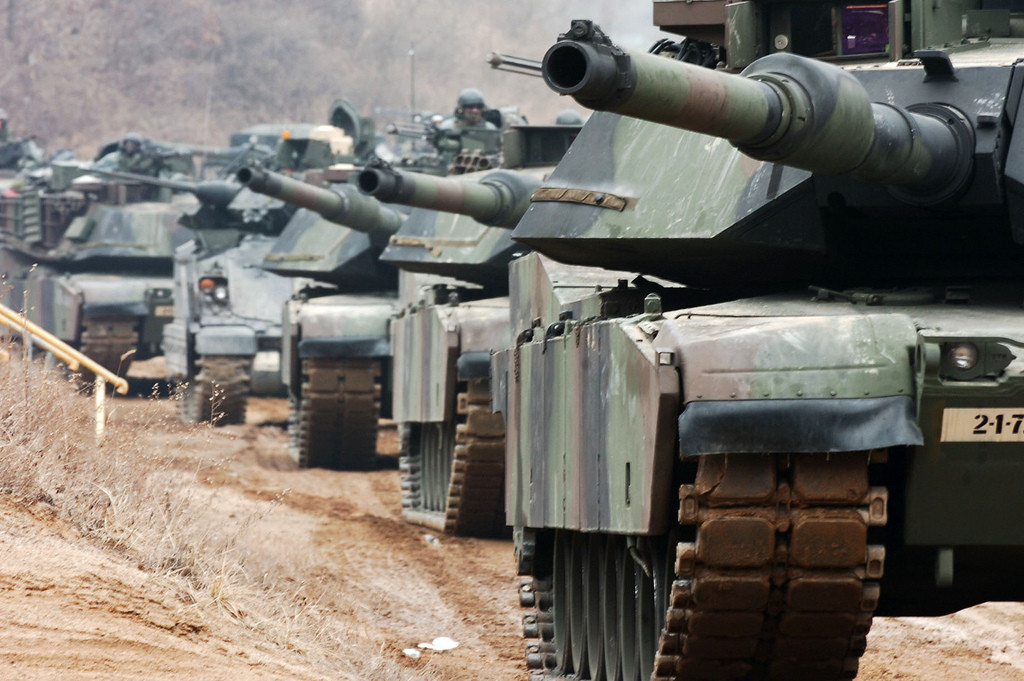Making Sense of Military Doctrine: Joint and Service Views on Maneuver

Maneuver is a critical concept to properly plan and execute warfare on all levels. Yet service and joint doctrine provide confusing and sometimes conflicting guidance about what the term means for the force today. So let’s take a look and try to distill this concept down to its essence.
In Army doctrine, movement and maneuver is one of eight elements of combat power that enable forces to achieve a position of advantage in relation to the enemy (ADRP 3-0). For the Air Force, maneuvering airpower adds flanks in other dimensions that make the vertical and virtual battle as important as the horizontal battle. It conceives of airspace as analogous to an additional flank in the third dimension, which can be exploited to achieve a relative advantage (AFDD 3-0). And USMC doctrine discusses maneuver warfare as an expansion of the notion of maneuver. For Marines, maneuver warfare includes taking action in any dimension whether temporal, psychological or technological, to gain an advantage (MCDP 1-0).
These service definitions don’t do much to alleviate confusion, so what about joint doctrine? Within joint doctrine, maneuver first appears as a principle of joint operations focused on placing the enemy in a position of disadvantage through the flexible application of combat power.Moreover, movement and maneuver are defined together as a single joint function within joint doctrine. Joint Publication 3-0 Joint Operations illustrates this point, defining movement and maneuver together as
…the disposition of joint forces to conduct operations by securing positional advantages before or during combat operations and by exploiting tactical success to achieve operational and strategic objectives. This function includes moving or deploying forces into an operational area and maneuvering them to operational depths for offensive and defensive purposes. It also includes assuring the mobility of friendly forces.
The movement and maneuver function encompasses a number of tasks including:
- Deploy, shift, regroup, or move joint and/or component force formations within the operational area by any means or mode (i.e., air, land, or sea).
- Maneuver joint forces to achieve a position of advantage over an enemy.
- Provide mobility for joint forces to facilitate their movement and maneuver without delays caused by terrain or obstacles.
- Delay, channel, or stop movement and maneuver by enemy formations. This includes operations that employ obstacles (i.e., counter mobility), enforce sanctions and embargoes, and conduct blockades.
- Control significant areas in the operational area whose possession or control provides either side an operational advantage.
This gives us something a bit more concrete on which to base our understanding of maneuver, although by combining movement and maneuver into a single discussion, it introduces another layer of complexity. So what can we decipher about movement and maneuver from this list of tasks? Based on the first one, movement is included in the movement and maneuver function unless it is movement of material or individuals, in which case it belongs in the sustainment function. The second tasks looks like a simple definition of maneuver, but perhaps surprisingly, it is not one of the four definitions provided in Joint Publication 1-02 (listed below). The third task assures the mobility of friendly forces through the use of engineering and protection, but the actual protection itself belongs to the protection function and engineering belongs, naturally, to the sustainment function (there is no engineering function). Lastly, gaining and maintaining control of particular areas is considered part of the movement and maneuver function, but this is not to be confused with the element of control within the exercise of command and control.
Focusing more specifically on joint maneuver itself, maneuver is defined in Joint Publication 1-02 in four distinct ways:
- A movement to place ships, aircraft, or land forces in a position of advantage over the enemy.
- A tactical exercise carried out at sea, in the air, on the ground, or on a map in imitation of war.
- The operation of a ship, aircraft, or vehicle, to cause it to perform desired movements.
- The employment of forces in the operational area through movement in combination with fires to achieve a position of advantage in respect to the enemy.
Three of these definitions are tactical tasks. Only two are in relation to an enemy, and one essentially describes maneuver as the combination of movement and fires. This, then, might be the best and most accurate way of conceptualizing the maneuver function. In the words of a Marine Corps colonel responsible for operations in Anbar: “what the hell, maneuver as a joint idea is just movement—movement and fires.”
Jeff Becker is the chief futurist in the Joint Staff J7 Joint Concepts Division. LTC Todd Zwolensky is a strategist in the Joint Staff J7 Joint Concepts Division.
Photo credit: The U.S. Army

